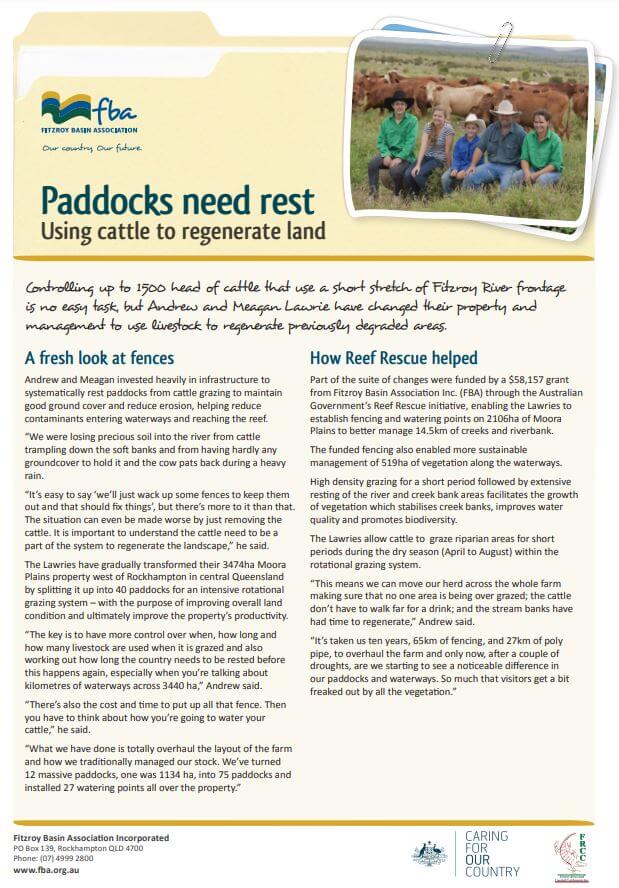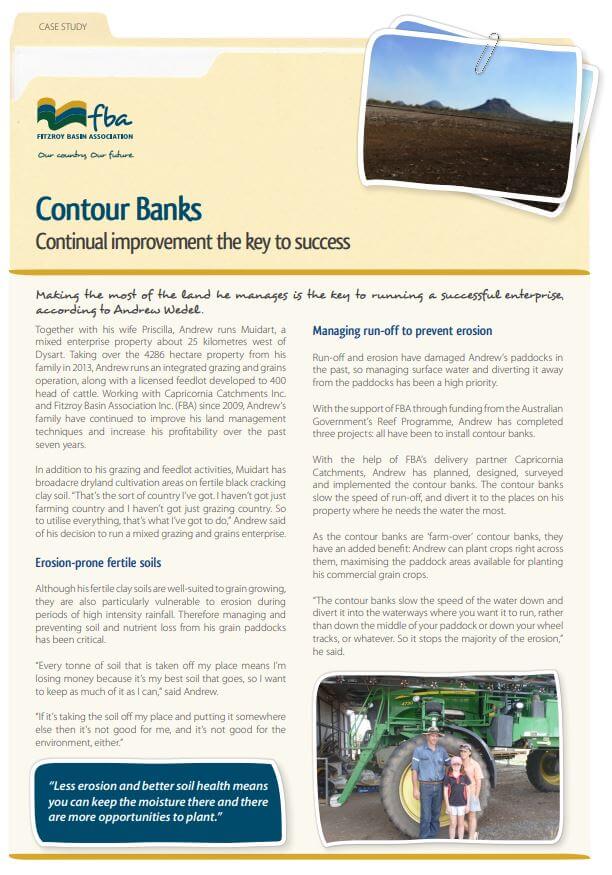Resources library - Case Studies & Snapshots
Case Studies & Snapshots Resources
Wetland Case Study
Nankin Broadmeadows wetland case study

A history of cattle, water and wildlife on Nankin Plain.
Riparian fencing case study
Maximising grazing areas by using smaller paddocks

It might seem like a simple change, but by installing riparian fencing and creating smaller paddocks that are segregated according to land type, grazier Jim Curran and his wife Janet are able to manage their herd better and maximise the use of previously under-used pasture. And they are encouraging others to do the same.
CQ graziers talk about the value of attending training
CQ graziers talk about the value of attending training

Everybody learns. Eight of our Central Queensland graziers talk about what they get out of attending industry training, why it's important to their business and why they'd recommend it to others.
Using cattle to regenerate land
Using cattle to regenerate land - paddocks need rest

Controlling up to 1500 head of cattle that use a short stretch of Fitzroy River frontage is no easy task, but Andrew and Meagan Lawrie have changed their property and management to use livestock to regenerate previously degraded areas.
Wetlands Case Study
Torilla wetlands case study

A Queensland Wetlands Program case study focusing on integrating high value grazing and wetland management on Torilla Plain.
Contour Banks Case Study
Contour Banks Case Study

Making the most of the land he manages is the key to running a successful enterprise, according to Andrew Wedel.
CQ graziers talk about why FBA programs matter to them
CQ graziers talk about why FBA programs matter to them

FBA helps graziers implement property and management improvement practices to increase profitability, productivity and sustainability. A number of Reef Trust A-Class Grazing participants talk about why the program matters to them
Fencing land types case study
Fencing land types - If you fence it, they will eat it

Making cattle eat the right grass in the right place is a lot like forcing a child to eat their vegetables - it’s difficult. When cattle find a more desirable grass species in a level, shady spot, they stick around.
Personalised property visits for tailored grazing solutions
Personalised property visits for tailored grazing solutions

When Sue and David Walmsley purchased Walm-ley in 2009, the 214 hectare Droughtmaster cattle stud was in poor condition. The soil was compacted and eroding, and its pastures were degraded. Walm-ley is just 6 km south of Injune and bordered by Injune Creek. It was clear its land condition had to improve so the Walmsleys grazing business would be sustainable, and their valuable soil would not be washed away and onto the Great Barrier Reef.








